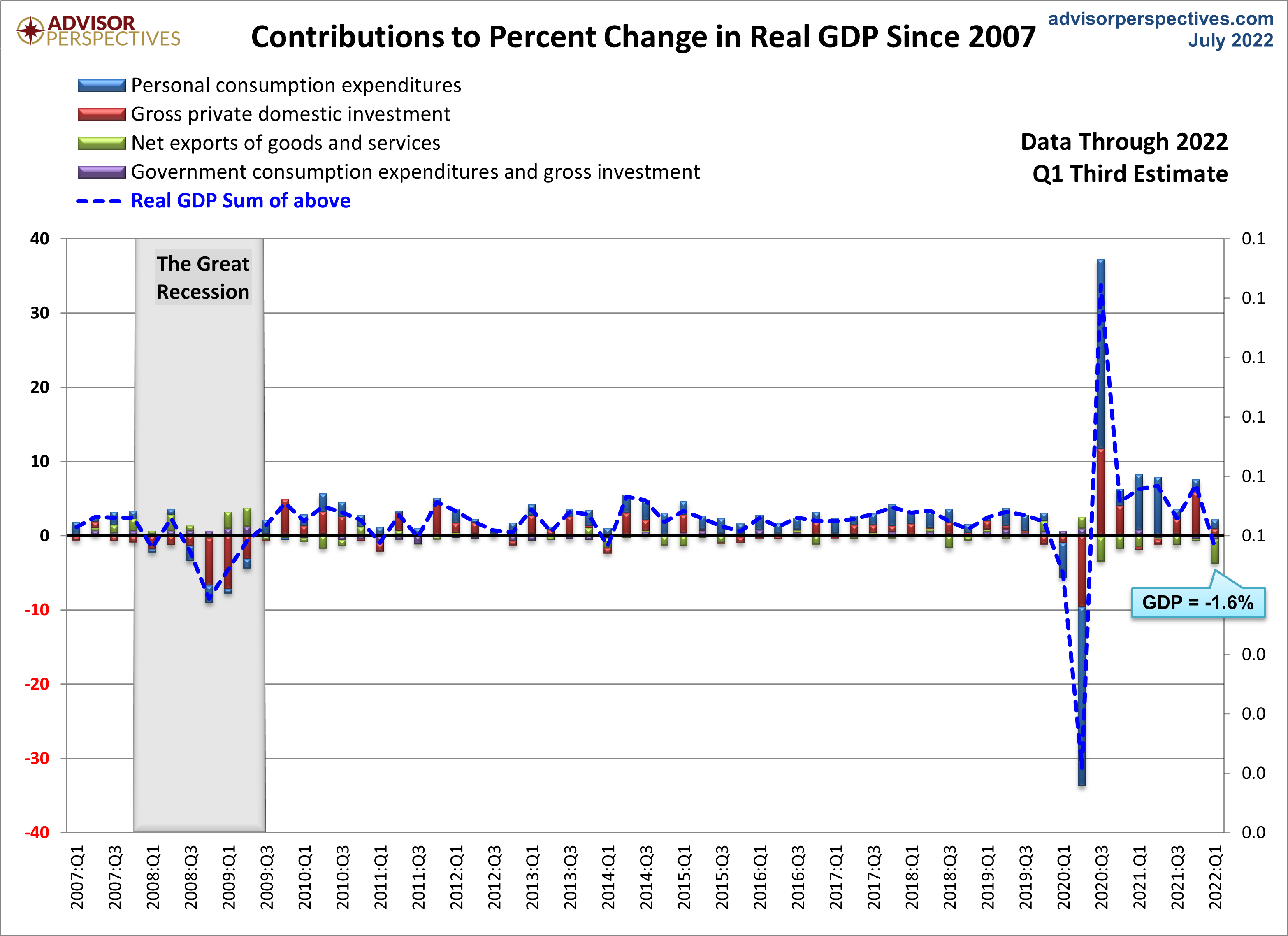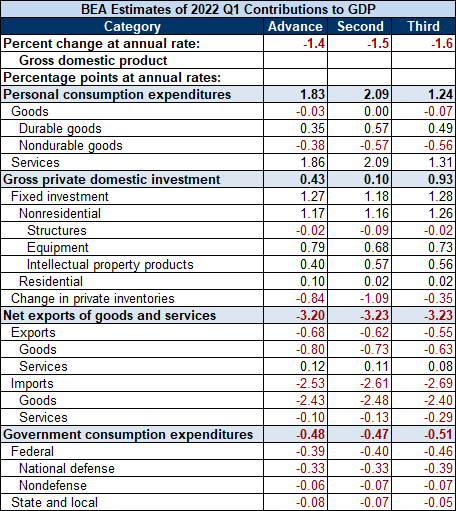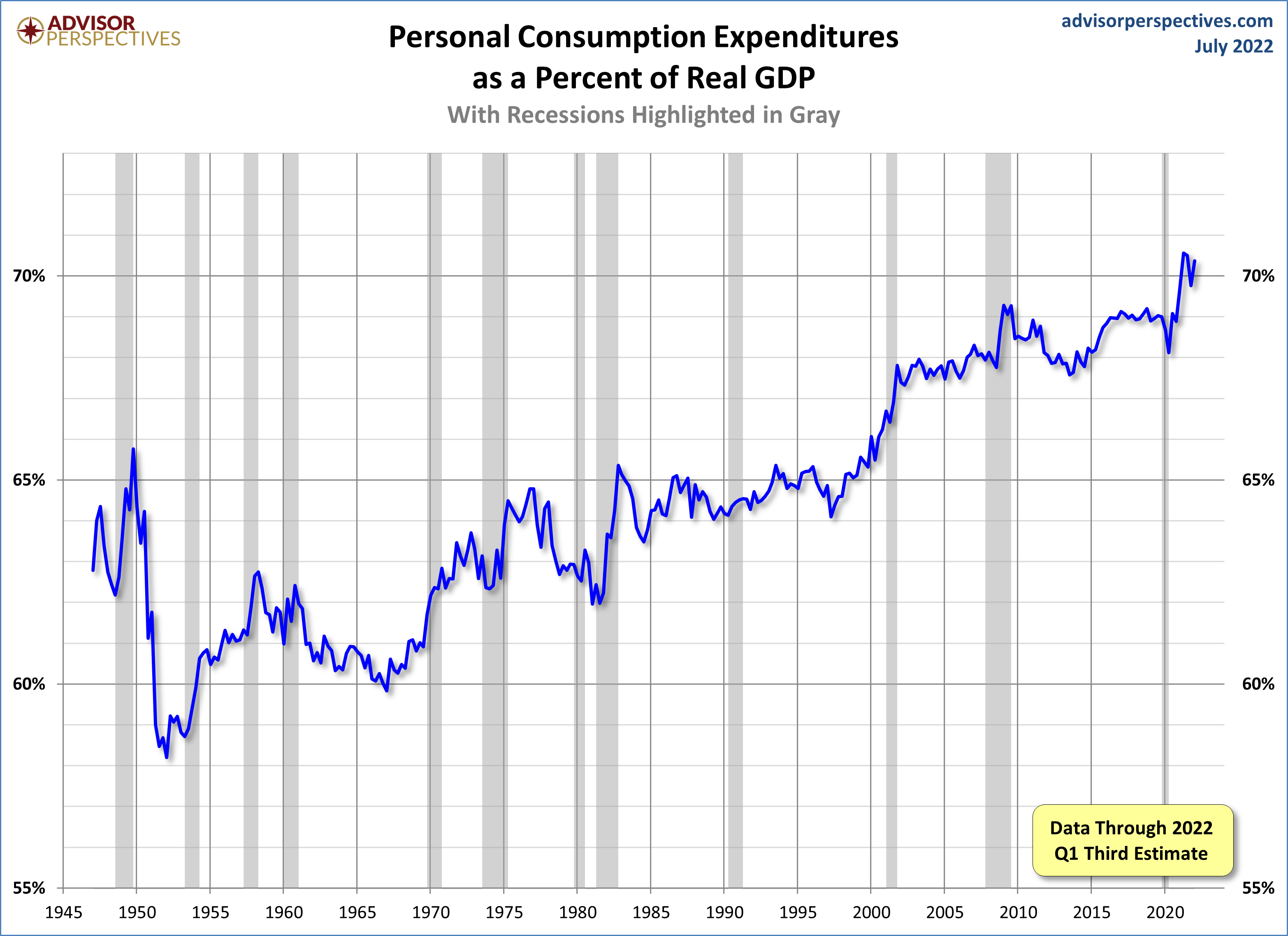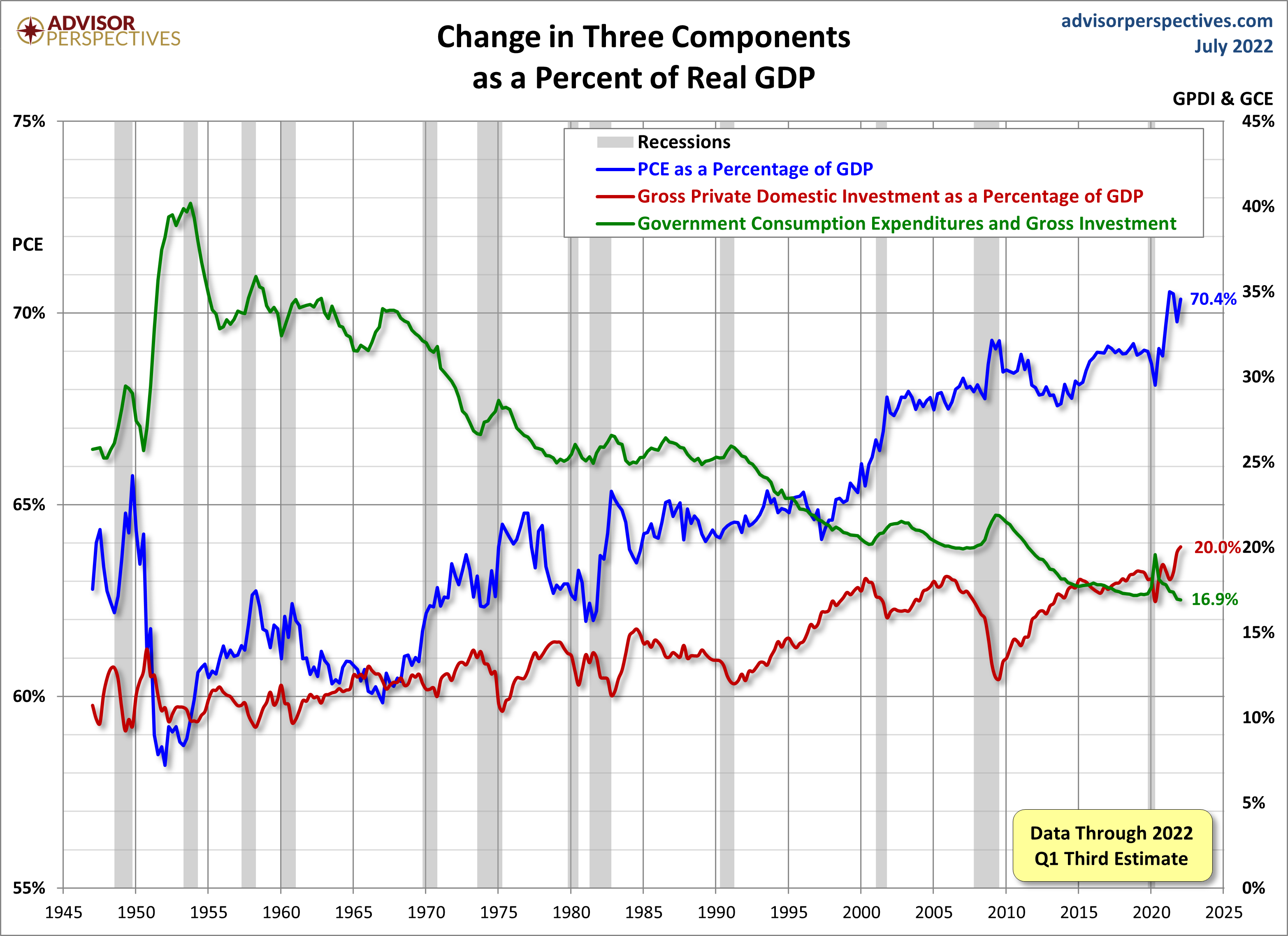An Inside Look At The GDP Q1 Third Estimate
The chart below is a way to visualize real GDP change since 2007 and uses a stacked column chart to segment the four major components of GDP with a dashed line overlay to show the sum of the four, which is real GDP itself. Here is the latest overview from the Bureau of Labor Statistics:
Real gross domestic product (GDP) decreased at an annual rate of 1.6 percent in the first quarter of 2022, following an increase of 6.9 percent in the fourth quarter of 2021. The decrease was revised down 0.1 percentage point from the "second" estimate released in May. In the first quarter, there was a resurgence of COVID-19 cases from the Omicron variant and decreases in government pandemic assistance payments.
Let's take a closer look at the contributions of GDP of the four major subcomponents. The data source for this chart is the Excel file accompanying the BEA's latest GDP news release (see the links in the right column). Specifically, it uses Table 2: Contributions to Percent Change in Real Gross Domestic Product.

Note: The conventional practice is to round GDP to one decimal place, the latest at -1.6%.
Here is a chart of the latest estimates.
Over the time frame of this chart, the Personal Consumption Expenditures (PCE) component has shown the most consistent correlation with real GDP itself. When PCE has been positive, GDP has usually been positive, and vice versa. In the latest GDP data, the contribution of PCE came in at 1.8 of the -1.4 real GDP, mostly unchanged from the previous quarter.

Gross Private Domestic Investment was a positive contributor.
Net Exports were negative in Q4.
Government Consumption Expenditures came in as a negative contributor.
As for the role of Personal Consumption Expenditures (PCE) in GDP and how it has increased over time, here is a snapshot of the PCE-to-GDP ratio since the inception of quarterly GDP in 1947. To one decimal place, the latest ratio of 70.4% is just below its record high.

Let's close with a look at the inverse behavior of three of the GPDI components during recessions. PCE and especially GC generally increase as a percent of GDP whereas GPDI declines. Note the three with different vertical axes (Personal Consumption Expenditures on the left, Gross Private Domestic Investment and Government Consumption on the right) to highlight the frequent inverse correlations.

More By This Author:
NFIB Small Business Survey: Down In June, Lowest Since 2013
World Markets Update - Monday, July 11
CPI And PCE: Two Measures Of Inflation And Fed Policy - Monday, July 11



